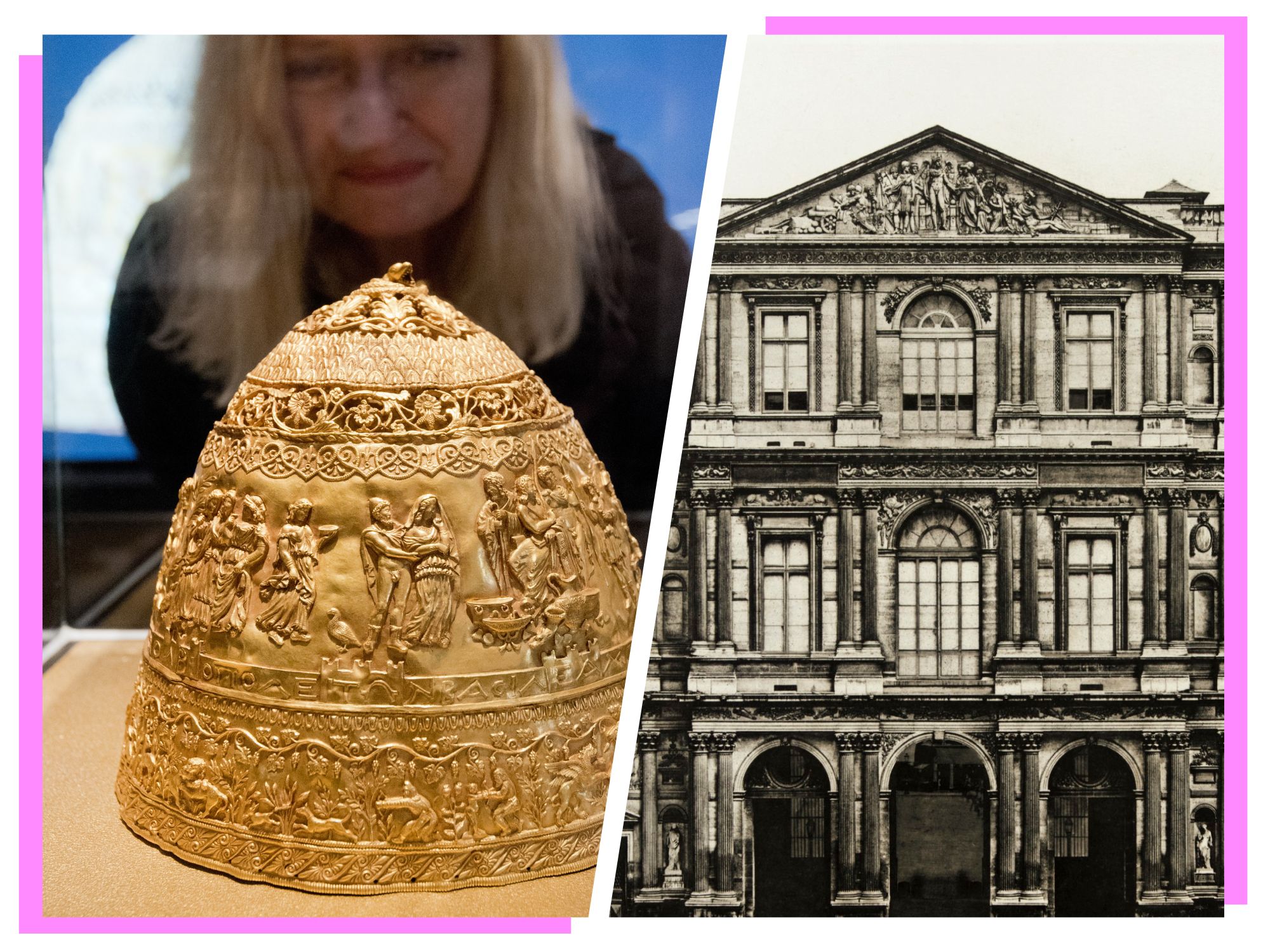
The tiara of Saitaphernes, a golden crown that depicts scenes from the Iliad, was once considered one of the Louvre’s most prized artifacts. Today, the tiara holds the Guinness World Record for the greatest goldsmith fraud of all time.
In the spring of 1896, the Louvre Museum in Paris, France announced its purchase of an exquisite object: a golden helm believed to have belonged to an ancient Scythian king, preserved in immaculate condition. In the late 19th century, a zealous fascination with Greco-Scythian relics swept world, a craze encouraged by the discovery of extraordinary relics at Greco-Scythian sites. So when two merchants, namely the Gokhman brothers, came to the Louvre with the promise of such a relic, the museum’s curators were desperate to claim it for themselves.
The alleged tiara of king Saitaphernes, who lived in the 3rd century B.C.E., bore an inscription in Greek which matched one found on another verified artifact, which established a sense of authenticity. It read, “the council and the citizens of Olbia honor the great and invincible King Saitaphernes.”
The Tiara of Saitaphernes is a golden helmet featuring intricate reliefs depicting classical figures and scenes from the Iliad. The crown allegedly belonged to an ancient Scythian king. Photo: public domain.
Buoyed the matching inscription, museum curators, in their fervor to get their hands on the tiara, overlooked some of the rather glaring issues with the artifact’s provenance. Firstly, the figures depicted on the crown came from different periods and nations, rather than the alleged ancient Scythians. Secondly, the tiara’s near pristine state of preservation should have at least raised some eyebrows—and it did.
Within two months of the Louvre’s inaugural display of the tiara, Russian scholar Alexander Veselovsky publicly declared the relic a fake. Another expert, German archaeologist Adolf Furtwängler agreed. Furtwängler quizzed the object’s lack of patina, and made public jabs at the Louvre for somehow ignoring the traces of modern tools on the artifact. Only the smooth expanses of the crown had some dents, while every important area and figure miraculously sustained no damage at all. French experts rejected these claims, dismissing Furtwängler as a jealous German.
The curtains finally fell in 1903, when a Russian jeweler named Lifschitz published a letter in the newspaper Le Matin. In it, he asserted that he had seen a friend create the tiara. That friend was Ukrainian jeweler Israel Rouchomovsky, an extraordinary goldsmith who lived and worked in Odessa.
When summoned to Paris by a special parliamentary commission, Rouchomovsky revealed himself not as a cunning fraudster, but as an unwitting accomplice. Though his knowledge of ancient history proved limited, his craftsmanship was undeniable. Given gold leaf and tools, he recreated a section of the tiara from memory, confirming his role as its creator. The Louvre, humiliated, squirreled the pieced away to the netherworld of its basement archives.
Artifact or fake? The tiara of Saitaphernes has an incredible story, from one of the Louvre’s most prized possessions, to its remembrance as history’s greatest goldsmith fraud. Image via Wikimedia Commons
Rouchomovsky was a master of his craft, but he was no swindler. Peter Carl Fabergé, the Russian jeweler renowned for his sublime Fabergé eggs, considered him to be the greatest goldsmith of all time.
The Gokhman brothers commissioned Rouchomvsky to create the tiara under the pretense that it was a gift for their “archaeologist friend.” To ensure authenticity, they supplied the goldsmith with archaeological texts on Graeco-Scythian artifacts, which he studied meticulously over the seven months he spent crafting the tiara. Though he used modern soldering to make the crown, he concealed his tracks masterfully.
As for the brothers, they were cunningly capitalizing on the ongoing fascination with Graeco-Scythian period. They crafted an elaborate origin story, claiming the tiara was unearthed during the excavation of a kurgan (burial mound) in Crimea. Their narrative may have been influenced by an 1895 Vienna newspaper article describing a remarkable archaeological discovery by Crimean peasants.
These farmers, according to the report, had possibly abandoned their findings and fled, fearing Russian authorities would seize their treasures. This detail provided a convenient explanation for how such valuable artifacts, including the tiara, might have found their way to the Gokhmans.
After failed attempts to sell to both the Imperial Court Museum in Vienna and the British Museum, the brothers found a willing buyer, or a sucker, in the Louvre. They demanded 200,000 gold francs—an astronomical sum. Once they cashed in, the brothers vanished without a trace.
Though the tiara was hidden away, as any deep dark secret would be, it was brought out from the shadows in 1954 for the Louvre’s “Salon of Fakes” exhibition, where it was displayed along with eight counterfeit Mona Lisa paintings. The tiara exposed the thin line between art and artifice, as an object of tremendous beauty, and a masterpiece of fine jewelry. It may be a fake, but it is a beautiful fake.
The Hunt explores art and ancient relics that are—alas!—lost to time. From the Ark of the Covenant to Cleopatra’s tomb, these legendary treasures have long captured the imaginations of historians and archaeologists, even if they remain buried under layers of sand, stone, and history.